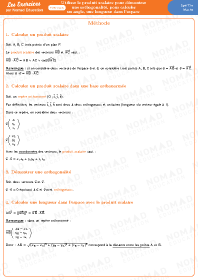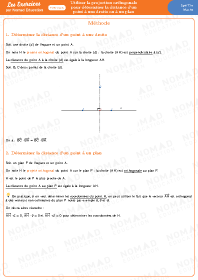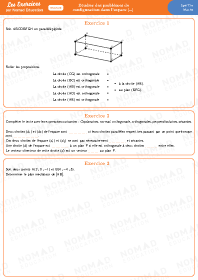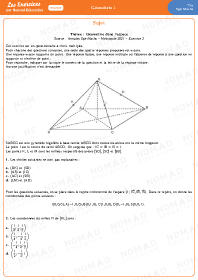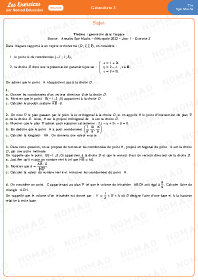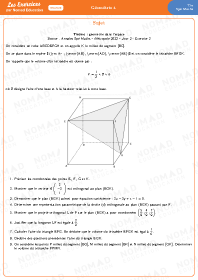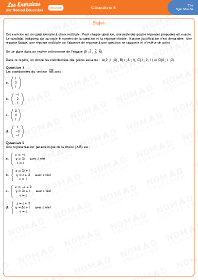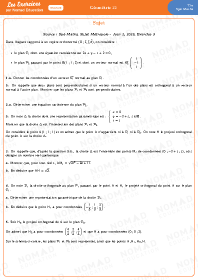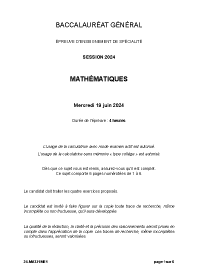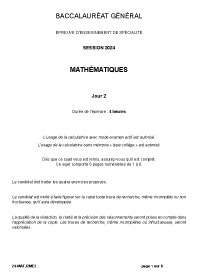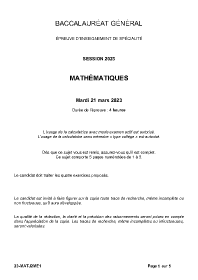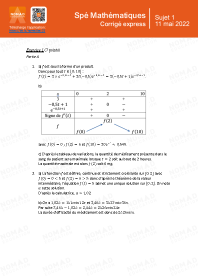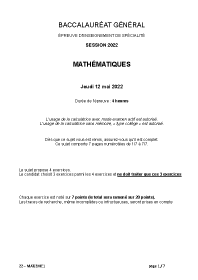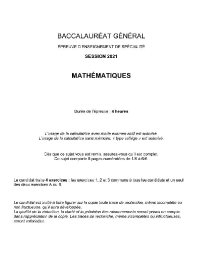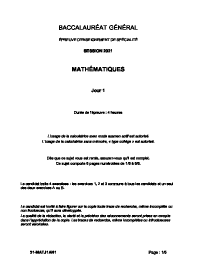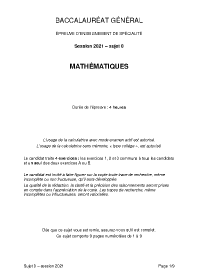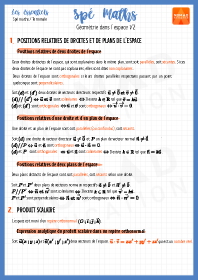Norme d’un vecteur
Pour $\vec{u}(x~;~y~;~z)$ un vecteur de l'espace :
$\| \overrightarrow u \| = \sqrt{x^2 + y^2 + z^2}$
Distance entre deux points
Pour $\mathrm{A }({x}_{\mathrm{A}} ; {y}_{\mathrm{A}} ; {z}_{\mathrm{A}})$ et $\mathrm{B}({x}_{\mathrm{B}} ; {y}_{\mathrm{B}} ; {z}_{\mathrm{B}})$, deux points de l'espace :
$\mathrm{AB} = \sqrt{\overrightarrow{\mathrm{AB}} \cdot \overrightarrow{\mathrm{AB}}}=$ $\sqrt{{({x}_{\mathrm{B}} - {x}_{\mathrm{A}})}^2 + {({y}_{\mathrm{B}} - {y}_{\mathrm{A}})}^2 + {({z}_{\mathrm{B}} - {z}_{\mathrm{A}})}^2}$
Exemple :
Pour les points $\mathrm{A}(-1~;~ -2 ~; ~2)$ et $\mathrm{B}(3~; ~0~ ;~ 1)$, $\overrightarrow{\mathrm{AB}}(4~;~2~;~-1)$ et :
$\mathrm{AB} = \sqrt{4^2+2^2+{(-1)}^2} = \sqrt{16+4+1} = \sqrt{21}$.
Vecteurs orthogonaux
Deux vecteurs de l’espace sont orthogonaux si et seulement si leur produit scalaire est nul.
Exemple :
Les vecteurs $\vec{u}(2~;~-1~; ~3)$ et $\vec{v}(2~;~4~;~0)$ sont orthogonaux car :
$\overrightarrow{u} \cdot \overrightarrow{v} = 2 \times 2 + (-1) \times 4 + 3 \times 0$ $= 4 - 4 = 0$.


